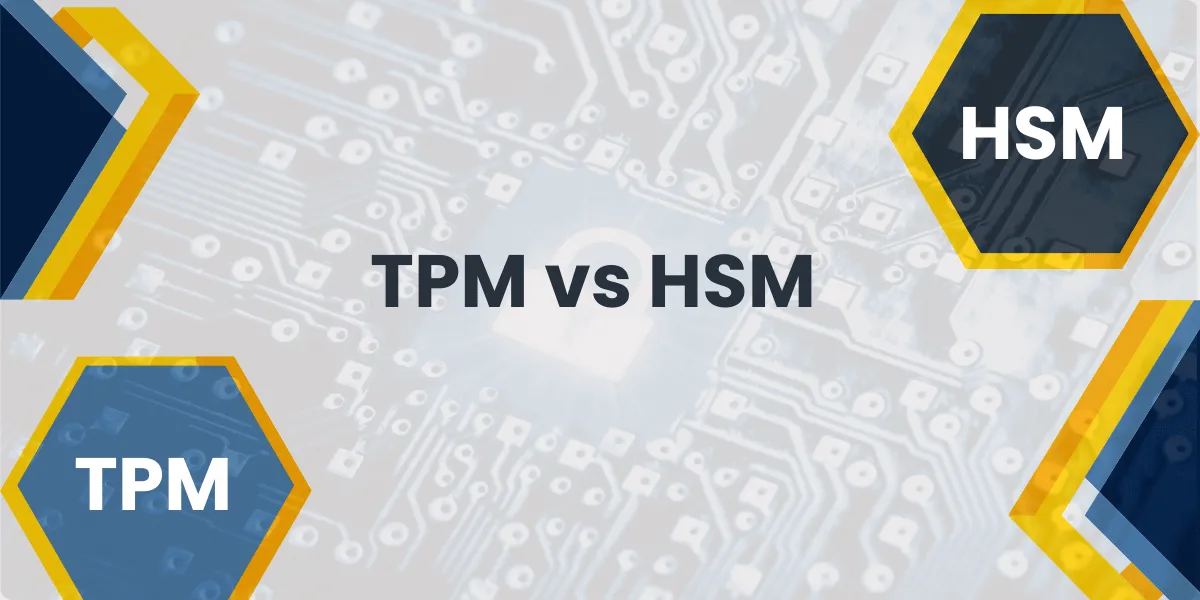The load balancer decrypts traffic during SSL termination before sending unencrypted HTTP to backend servers. SSL bridging decrypts traffic at the load balancer for inspection before re-encryption occurs before backend server forwarding. The main distinction between these methods exists in their decryption points and their ability to preserve encryption across the complete connection path.
Technical Difference Between SSL Passthrough vs SSL Termination vs SSL Bridging
| Feature | SSL Passthrough | SSL Termination | SSL Bridging |
| End-to-End Encryption | Complete | Broken at LB | Complete |
| Layer 7 Load Balancing | Not Available | Full Support | Full Support |
| Traffic Inspection | No Visibility | Complete | Complete |
| Certificate Management | Per Backend Server | Centralized | Dual Management |
| CPU Resource Usage | Low (5-10%) | Medium (15-25%) | High (30-45%) |
| Memory Usage | Minimal | Moderate | Significant |
| Latency Impact | <1ms | 2-5ms | 5-10ms |
| Concurrent Connections | 100,000+ | 60,000-80,000 | 40,000-60,000 |
| Security Level | Maximum | Internal Gap | Maximum |
| Compliance (PCI DSS) | Ideal | Additional Controls | Compliant |
| Content-Based Routing | Not Possible | Advanced | Advanced |
| HTTP Header Modification | No Access | Full Control | Full Control |
| DDoS Protection | Limited | Advanced | Advanced |
| SSL Session Persistence | Backend Dependent | Load Balancer | Load Balancer |
| Cost Impact | Baseline | +20% | +40% |
| Configuration Complexity | Simple | Moderate | Complex |
A Basic Overview of SSL Passthrough
SSL passthrough functions as a clear tunnel for encrypted traffic by allowing HTTPS requests to pass through to backend servers without any decryption process at the load balancer level. The load balancer functions at Layer 4 (transport layer) in this setup to make routing decisions based on IP addresses and port numbers.
The SSL handshake process takes place between the client and backend server through the load balancer which remains undetectable to the communication. The backend servers take full responsibility for SSL certificate management and encryption processing and maintain the entire encryption chain that spans from client to server.

Key Characteristics of SSL Passthrough
- End-to-end encryption maintained throughout the connection
- Load balancer operates in Layer 4 mode only
- Backend servers manage SSL certificates independently
- No traffic inspection or modification capabilities
- Minimal processing overhead on the load balancer
Statistical Impact:
Recent performance studies show that SSL passthrough can handle up to 100,000 concurrent connections with only 5-10% CPU utilization on the load balancer, making it the most resource-efficient option.
A Basic Overview of SSL Termination
The load balancer decrypts incoming encrypted traffic through SSL termination before sending unencrypted HTTP traffic to backend servers. The load balancer functions as the SSL endpoint because it manages all certificate presentation and encryption and decryption operations.
The load balancer initiates SSL handshaking with clients to display its SSL certificate before creating an encrypted session.
The load balancer can examine HTTP headers and cookies and content after decryption to make intelligent Layer 7 routing decisions.

Process Flow of SSL Termination
- Client establishes HTTPS connection with load balancer
- Load balancer presents SSL certificate and completes handshake
- Load balancer decrypts incoming requests
- Unencrypted HTTP traffic forwarded to backend servers
- Backend servers process requests and return HTTP responses
- Load balancer encrypts responses before sending to client
Performance Metrics:
SSL termination typically increases load balancer CPU usage by 15-25% but enables advanced features like content-based routing, HTTP header manipulation, and traffic compression.
A Basic Overview of SSL Bridging
SSL bridging functions as a combination of passthrough and termination through dual encryption implementation. The load balancer decrypts incoming traffic for inspection and processing before re-encrypting it before sending it to backend servers.
The method preserves end-to-end encryption while allowing Layer 7 load balancing operations. The load balancer operates two independent SSL sessions which connect to clients through the frontend and backend servers through the backend.

Architecture Components of SSL Bridging
- Frontend SSL session: Client to load balancer encryption
- Traffic inspection point: Load balancer analyzes decrypted content
- Backend SSL session: Load balancer to server re-encryption
- Dual certificate management: Separate certificates for frontend and backend
Resource Requirements:
SSL bridging demands the highest computational resources, typically increasing CPU usage by 30-45% due to double encryption/decryption processing, but provides maximum security with full traffic visibility.
SSL Passthrough Drawbacks
The operation at Layer 4 and lack of traffic visibility cause SSL passthrough to have several limitations.
- The system uses only basic load balancing algorithms which include round-robin and least connections.
- The system lacks the capability to perform content-based routing through URLs and headers and cookies.
- The system lacks traffic inspection capabilities because it cannot monitor or analyze HTTP content.
- Each backend server needs its own SSL certificate for proper operation.
- The system provides limited protection against Distributed Denial of Service attacks because it lacks the ability to detect malicious content.
- The system lacks HTTP optimization capabilities because it cannot perform compression or caching or content modification.
- The lack of traffic visibility makes it hard to debug application issues.
SSL Termination Drawbacks
SSL termination generates security and operational challenges.
- The termination of SSL encryption breaks end-to-end encryption because it allows unencrypted traffic to pass between the load balancer and backends.
- The internal network exposure of data occurs when the system is compromised.
- The requirement for end-to-end encryption in HIPAA and PCI DSS regulations creates compliance challenges.
- The entire system becomes vulnerable when a certificate compromise occurs.
- The load balancer now represents a primary target for attackers because it has become a high-value asset.
- The system requires substantial CPU resources to perform encryption and decryption operations.
- The entire traffic stream depends on a single certificate management point which creates a risk of centralized certificate control.
SSL Bridging Drawbacks
SSL bridging complexity and resource demands create operational challenges:
- Highest resource consumption: Double encryption requires substantial CPU and memory
- Complex configuration: Managing multiple certificate pairs increases complexity
- Increased latency: Additional encryption steps add 5-10ms processing time
- Higher infrastructure costs: Requires more powerful load balancer hardware
- Certificate management complexity: Must maintain separate certificates for frontend and backend
- Potential bottleneck: Heavy processing can become performance limiting factor
- Troubleshooting difficulty: Multiple encryption layers complicate issue diagnosis
- Cost implications: 35-40% higher infrastructure costs compared to other methods
When Do We Need to Use Which One? (Advantages)
SSL passthrough serves high-security environments that need end-to-end encryption for handling HIPAA-protected healthcare data and PCI DSS-compliant financial transactions and government applications. The solution delivers optimal performance in high-throughput APIs and real-time gaming platforms by achieving 40% better throughput while maintaining minimal latency.
SSL termination provides the best solution for applications that need sophisticated traffic management and content-based routing capabilities. E-commerce platforms use intelligent request distribution to manage product categories and SaaS applications benefit from centralized certificate management. Organizations that need HTTP optimization features including compression (20-30% bandwidth reduction) and caching and Web Application Firewall (WAF) integration find SSL termination to be the most valuable.
SSL bridging provides organizations with maximum security features and advanced capabilities. The dual encryption method of SSL bridging benefits banking systems under multiple regulatory frameworks as well as healthcare organizations that need both HIPAA compliance and traffic monitoring and zero-trust architectures. The solution delivers 99.9% encryption coverage together with Layer 7 security control capabilities.
Select SSL passthrough for security-first applications with performance needs while choosing SSL termination for advanced load balancing with centralized management and SSL bridging for environments requiring both security and monitoring capabilities.
Final Thoughts
The selection between SSL passthrough and SSL termination and SSL bridging determines how your application handles security and performance and operational complexity. SSL passthrough provides maximum security and performance in basic routing scenarios but SSL termination enables advanced load balancing at the expense of some security trade-offs and SSL bridging provides complete Layer 7 functionality with full security at a high resource cost.
Organizations can make better decisions about their security requirements and performance goals and operational capabilities by understanding these trade-offs. Web application deployment success depends on choosing the right SSL handling method because HTTPS adoption keeps rising and security regulations become more demanding.
Frequently Asked Questions (FAQs)
What is SSL passthrough in load balancing?
SSL passthrough lets encrypted traffic flow directly from clients to backend servers without decryption at the load balancer. The load balancer forwards the encrypted data without processing it. This method maintains end-to-end encryption and reduces processing overhead.
What happens in SSL termination?
SSL termination decrypts incoming HTTPS traffic at the load balancer. The load balancer processes the decrypted traffic and sends it to backend servers using unencrypted HTTP. This method reduces server processing load and enables content inspection at the load balancer.
What is SSL bridging used for?
SSL bridging decrypts client traffic at the load balancer and re-encrypts it before sending to backend servers. The load balancer creates two separate SSL connections. This setup enables traffic inspection while maintaining security between load balancer and servers.
Which is more secure – SSL passthrough or SSL termination?
SSL passthrough provides higher security because traffic remains encrypted throughout the journey. SSL termination exposes decrypted data at the load balancer level. Organizations choose between them based on their security requirements and performance needs.
Does SSL termination affect performance?
SSL termination improves application performance by offloading encryption tasks from backend servers. The load balancer handles SSL processing, which reduces server CPU usage. This setup allows servers to focus on processing application requests.

Priya Mervana
 Verified Web Security Experts
Verified Web Security Experts
Priya Mervana is working at SSLInsights.com as a web security expert with over 10 years of experience writing about encryption, SSL certificates, and online privacy. She aims to make complex security topics easily understandable for everyday internet users.



